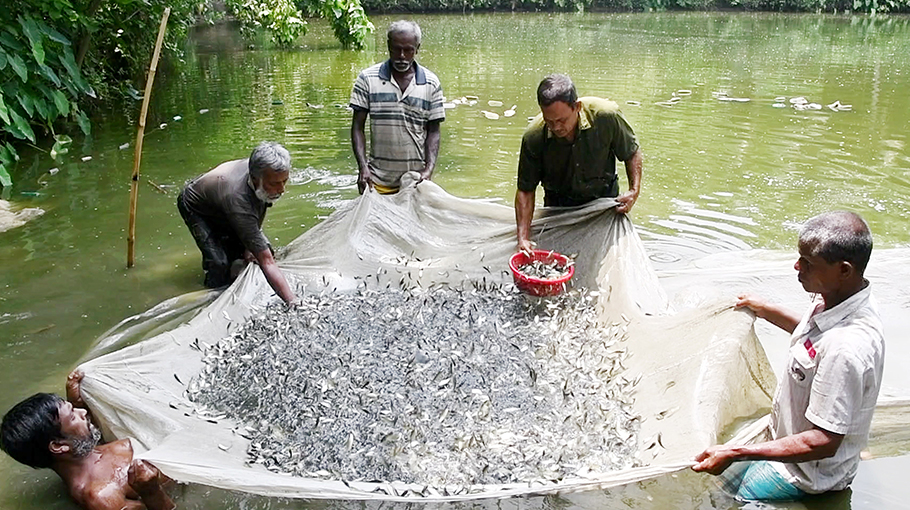Fishermen eye fortune in ‘G-3’ Rohu fish farming

Fishermen in Naogaon district sees fortune in farming genetically modified ‘G-3’ Rohu fish, which was introduced by WorldFish to increase fish production in the country.
Talking with Bangladesh Post Saiful Islam, a fisher man in Shailogachi upazila of the Naogaon district narrated with deep emotion how he became a successful entrepreneur by farming ‘G-3’ Rohu fish.
He used to farming different species of fish’s Renu/Pona since 1988. He collected 3 kg of G-3’ Rohu fish egg in 2023 from non-government development agency.
From 3 KGs of G-3 Rohu fish egg, now he produce over 3 lakh of fish Renu/ Pona within a year.
“I spent around 30-35 thousand taka and hope to earn about 3 lakh taka by farming G-3 Rohu fish by this year,” Saiful Islam told Bangladesh Post.
Sensing success, a number of fishermen in Naogaon district starts farming the G-3 Rohu fish hoping the maximisation of profit.
In 2020 and 2021, WorldFish introduced this genetically modified G3 Rohu strain to many hatcheries on a trial basis. The hatcheries grew these fish and began generating genetically modified seeds for nurseries and farmers to purchase.
Naogaon Sadar Upazila fish official Bayezid Alam said that the government is expanding its support to farmers who wants to produce G-3 Rohu fish.
With the gathering of spawn from the Halda, Padma, and Jamuna rivers, the WorldFish Rohu Genetic Improvement Programme began in 2012.
WorldFish established an on-farm performance trial involving 19 semi-commercial farms in Rajshahi and Khulna divisions. According to WorldFish, these semi-commercial farms represent the largest proportion of Bangladesh's fish farms.
The trial’s objective was to assess the growth performance of G3 Rohu compared to an unimproved Rohu strain, descended from fish collected from the Halda, Padma, and Jamuna rivers, and a well-regarded commercial strain, collected from a hatchery. All three Rohu strains were spawned at the same time and the resulting hatchlings were nursed at the WorldFish Carp Genetic Improvement facility near Jashore.
In May 2021, tagged fish were distributed to the trial farms and reared by the 19 farmers together with other fish species according to their usual farming practices. At harvest, between March and June 2022, G3 Rohu was ranked first in all 19 farms and on average, G3 fish weighed 37 percent more than the fish from the unimproved strain.
Bangladesh produces 4.5 million tonnes of fish per year, according to the Department of Fisheries. Inland aquaculture accounts for 57 percent of the fish, at 2.6 million tonnes. However, due to a lack of genetically modified fish eggs, Bangladeshi farmers are not receiving the expected benefits and profits from Rohu farming.



